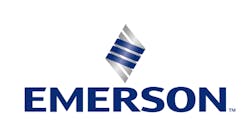We’re continuing to hear more about digital transformation – and for good reason. The promise of new technologies that help companies monitor their systems in real time, as well as collect and analyze data that lead to actionable insights, is an attractive one – especially for operations looking to achieve Top Quartile performance, reaching metrics within the top 25 percent of industry peers.
However, digital transformation is not an easy path – and rarely is it quick. Traditionally, equipment monitoring has been handled by a team of people – usually with a clipboard in hand – tasked with manually checking equipment and systems on a regular basis for indicators of issues and premature failures. This manual method had its place in time but does not result in the thorough analysis and real-time insights into equipment health that allow personnel to be proactive, addressing indicators of problems early instead of reacting after equipment failure has already occurred.
While it’s clear that Industrial Internet of Things (IIoT) technologies that offer analytics and insights are the right way forward, overhauling operational systems in process industries with completely new technologies is unrealistic. In fact, it’s best to start small and scale up according to the needs of your operation. A digital transformation is not a full-fledged gut of equipment, systems and software, but rather an evolution of organizational capabilities enabled by equipment and technology upgrades and work process changes, typically accomplished step-by-step over time.
This, no doubt, comes as a relief to understandably cautious executives and manufacturing functions wary of implementing digital transformation programs with complex data architectures and multimillion-dollar investments that require extensive engineering, a long-term commitment and, often, organizational shifts.
The gap between Information Technology (IT) and Operations Technology (OT), in particular, is creating a challenging but necessary disruption throughout manufacturing organizations looking to implement IIoT capabilities. Emerson research is finding that companies further into their digital transformation journey have better integrated, more collaborative IT/OT functions driven by a common goal of ensuring success.
For companies newer to digitization, however, the IT/OT dynamic can be a barrier. IT – controlling broader information systems with business-level applications and maintaining overall corporate computing environments – is concerned with functionality and security, often desiring to maintain the status quo of what they know works well. OT – the domain of engineering and operations staff managing production technologies and systems – wants to be more nimble and flexible in seeking solutions that allow for increased performance and reliability. As these two technology architectures converge thanks to IIoT, this natural point of tension often presents a stalling point for companies undergoing a digital transformation. But it is a critical one to overcome.
So, a key question remains: Where to start?
Having a vision – and a clear, actionable path forward – is critical to success. Yet an Emerson study of industrial leaders responsible for digital transformation initiatives found that only 20 percent of respondents said they had a vision and an actionable roadmap for digital transformation. Consider that 90 percent stated that having a clear roadmap was important, very important or extremely important and the disconnect becomes crystal clear.
There is no one roadmap that works for all companies. To make a positive impact, the roadmap must take into account where the company is – and where they want to go. For digital transformation projects to be successful, it’s crucial that companies find scalable, customizable solutions that work with their individual needs. To help industrial companies take the first step in their own transformation, Emerson developed a flexible set of technology solutions called the Plantweb™ digital ecosystem. Backed by Emerson’s deep domain expertise, Plantweb is a scalable IIoT solution using wireless technologies, advanced instrumentation and data analytics to help customers adopt technologies to address a specific business problem gradually, at their pace, over time.
With few companies offering both a wide breadth of solutions and vast flexibility, ecosystems like Plantweb allow companies to set and address their own priorities. For some customers, a first step is the implementation of upgraded monitoring tools. If a company, for example, wants to start monitoring control valves, it can install new monitoring tools that leverage previous investments and expand upon current infrastructure and monitoring systems already in place. This enables companies to grow their current capabilities and increase the data they receive without having to replace the whole of their systems and equipment.
Advanced technology portfolios like Plantweb can help companies show return on investment and build a strong business case for investing in IIoT tools. If a company wants to start small, for example, with a focus on harvesting and analyzing data for one type of equipment (such as pumps or compressors), it can install that specific technology and collect measurable results before expanding the technology across the plant floor.
A scalable ecosystem can help companies move forward in their individual digital transformations – no matter where they are in the process. An IIoT portfolio of interoperable technologies, software and services helps customers realize measurable improvements in reliability, safety, energy management and overall operations.
With Plantweb, companies can integrate these technologies over time to develop strong, data-centered operations. This allows plant managers to monitor operational performance in real time and predict asset health and usage, better positioning them to prevent unplanned outages, reduce the number of scheduled repairs and decrease costs.
There is no single path or one-size-fits-all solution for digital transformation. But with a specific goal in mind, companies can start integrating the advanced technologies they select, taking the steps to transform their business and evolve toward Top Quartile.
Sponsored by:





